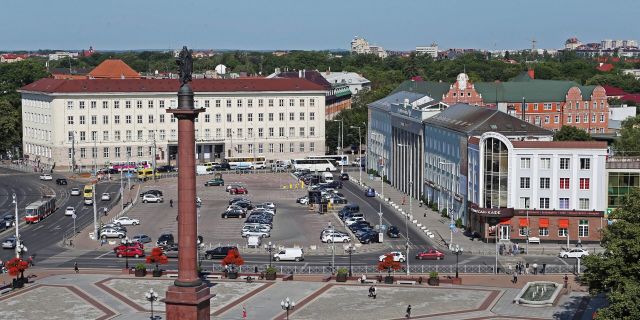Is the Russian exclave of Kaliningrad surrounded by the EU a valuable resource or a burden?
On the one hand, it is possible to "threaten" Europe from Kaliningrad, but on the other hand, during the war he himself is threatened with isolation, writes the Economist. And there is hardly another area in Russia that is being watched so closely by Western spies.
In May, during naval exercises, more than a hundred Russian soldiers in Kaliningrad simulated a nuclear strike on imaginary enemy positions in Europe. Russia in general often threatens Europe from its exclave. Unlike a number of other ports, Kaliningrad does not freeze all year round and serves as the base of the Baltic Fleet. Sweden fears a naval attack on the island of Gotland from there. And NATO – that Russia will invade Poland and Lithuania and create a land corridor to Belarus. But in the event of a war with NATO, the exclave, on the contrary, can create problems for Russia. How did these lands pass to Russia and what is it – a valuable resource or a burden?
Kaliningrad, as a "natural buffer zone," provides Russia with the first line of defense against the West, explains Jonas Kjellen, an analyst at the Swedish Defense Research Agency. The area is literally studded with radar systems that monitor the airspace of Central Europe. In 2012, Kaliningrad received the S-400 long-range missile defense systems. In 2016, Russia sent a short-range Iskander missile system there, placing nuclear warheads in inconvenient proximity to European cities. The Kremlin explained this step by countering the growing American military presence in the region.
The Kaliningrad Region is about the size of Northern Ireland. The port city was founded in 1255 by the Teutonic Knights. For centuries, Konigsberg, the commercial capital of East Prussia, has flourished. He gave the world the philosophers Immanuel Kant and Hannah Arendt and the writer E.T.A. Hoffman, author of The Nutcracker and the Mouse King. At the end of World War II, Germany ceded territory to the Soviet Union. The city was populated by Russians and Belarusians and renamed in honor of the Bolshevik leader Mikhail Kalinin. When the Baltic republics gained independence in 1991, the region with a population of 950,000 inhabitants was cut off from the rest of Russia. But the separatist movement never received support: after the protests in 2010 against the Kremlin's henchmen for the post of governor, Russia took tough measures against local media and suppressed local civil society.
But in the event of war, the convenient location of the area between NATO members will not allow Russia to disperse its forces. In addition, it will be difficult for Kaliningrad to replenish stocks. There is hardly another area in Russia that Western spies are watching so closely, explains Michael Kofman, director of the Russian studies program at the American Center for Naval Analysis. However, Russia will be able to hit targets in Europe with long-range missiles even without the help of its exclave. And if (or even when) Sweden and Finland join NATO, Kaliningrad risks being completely surrounded. Chellen warns that the exclave could become the "closest point of contact" between NATO forces and Russia. "If any incident happens, it will certainly be in the Baltic Sea," he believes.
Despite all the attempts of the Russian government to stimulate the economy in recent decades, Kaliningrad has been experiencing difficulties. The financial support and tax benefits provided back in 1996 for foreign investments are not enough: the industry of the region has not recovered from the decline. The conflict in Ukraine led to Western sanctions and finally spoiled trade relations with Poles and Lithuanians. Air traffic with the rest of Russia has risen in price to the point of inaccessibility: the main part of European airspace for Russian carriers is closed, and Lithuania has tightened transit rules. Rarely have Kaliningrad residents felt more disconnected from Russia.

